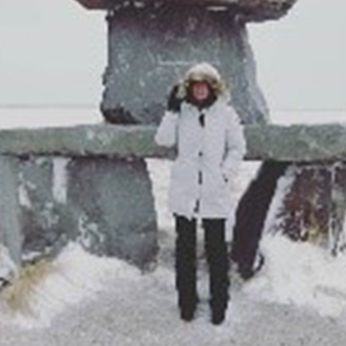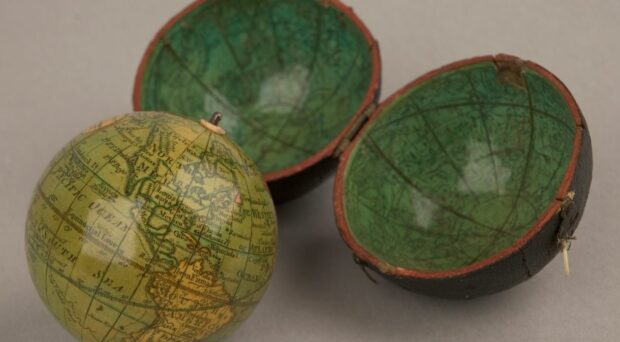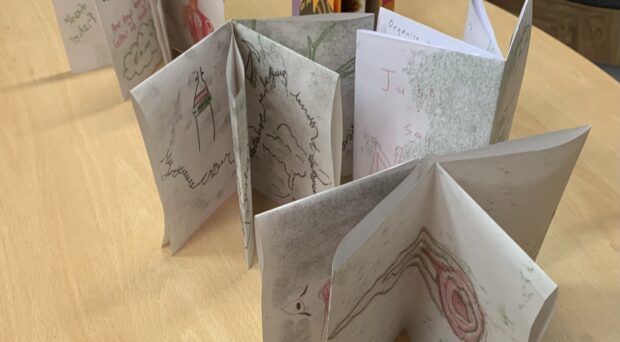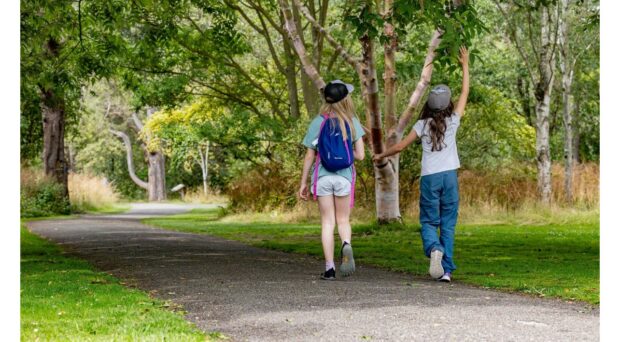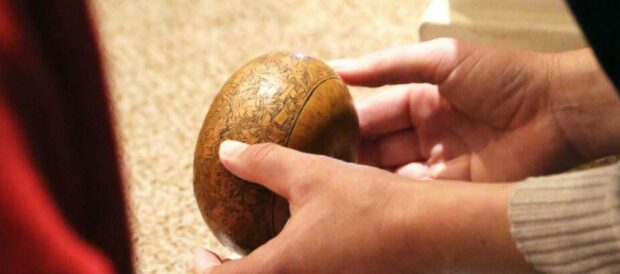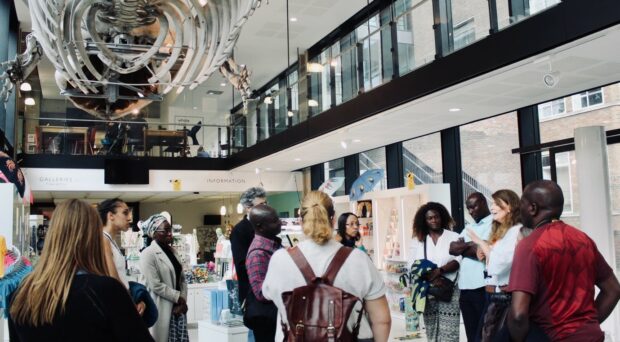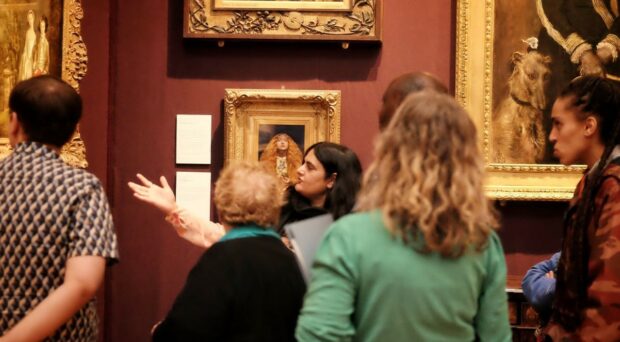The plan was this: invite twelve young people into the museum, fill their brains with information about the Polar Regions and museum displays and then ask them to produce the framework for a temporary exhibition about climate change. In a week.
There is a lot of buzz around ‘co-curation’ projects at the moment. The idea is, by bringing in an outside group of people to work alongside curators and other museum professionals, both sides gain new expertise and the resulting exhibition represents voices which might not otherwise be heard in the museum. In this case, that underrepresented group was teenagers. We managed to narrow down applications from 130 young people at the start of the process to a team of 12, and we had representatives from all over the UK – from Birmingham to small Devonshire towns and London to the North East. The University’s Selwyn College acted as their base for the week and Dr Matt Wise, the Schools Liaison Officer, took a leading role in the running of the course and ensured that student ambassadors were on hand all week to help settle the students into college life.
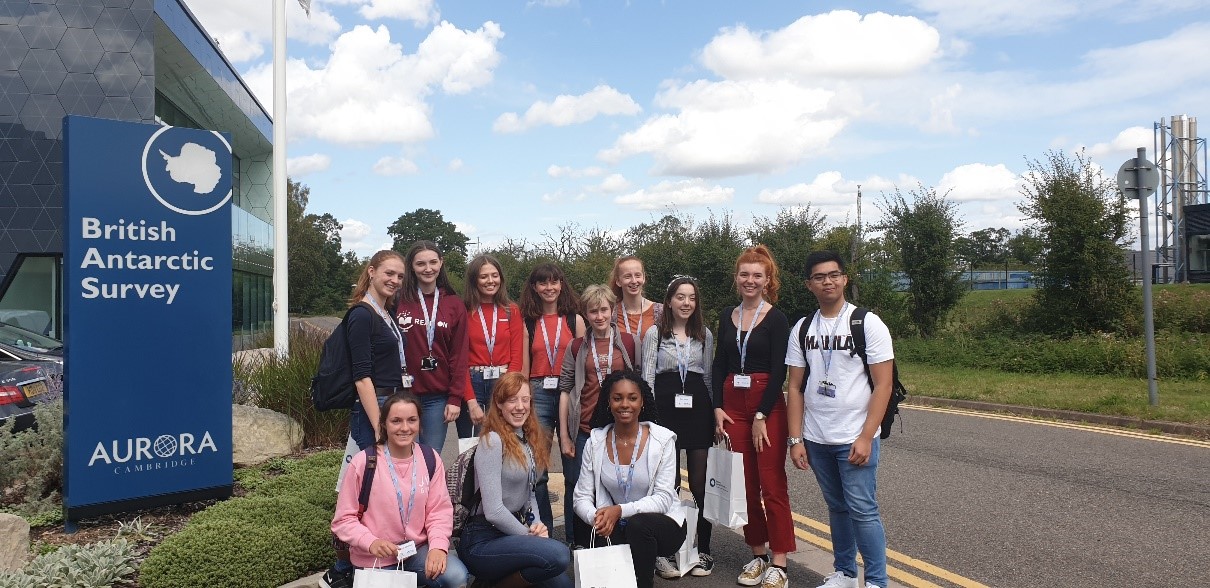
With only a week to get everyone up to speed on current climate research, as well as the ins and outs of producing a museum exhibition, each day was split into a number of sessions. Particular highlights were a whole morning of talks from researchers at the Scott Polar Research Institute (SPRI) who outlined their work and suggested objects that might be put on display in the exhibition. The team loved finding out about the scientific research going on in the Polar Regions and also had their assumptions challenged about the use of polar bears as a ‘metaphor’ for climate change and the role of women in polar research. Further emphasising the importance of women in our understanding of the Polar Regions, they even had a video message from Dr. Chandrika Nath, the Executive Director of the Scientific Committee on Antarctic Research (SCAR).
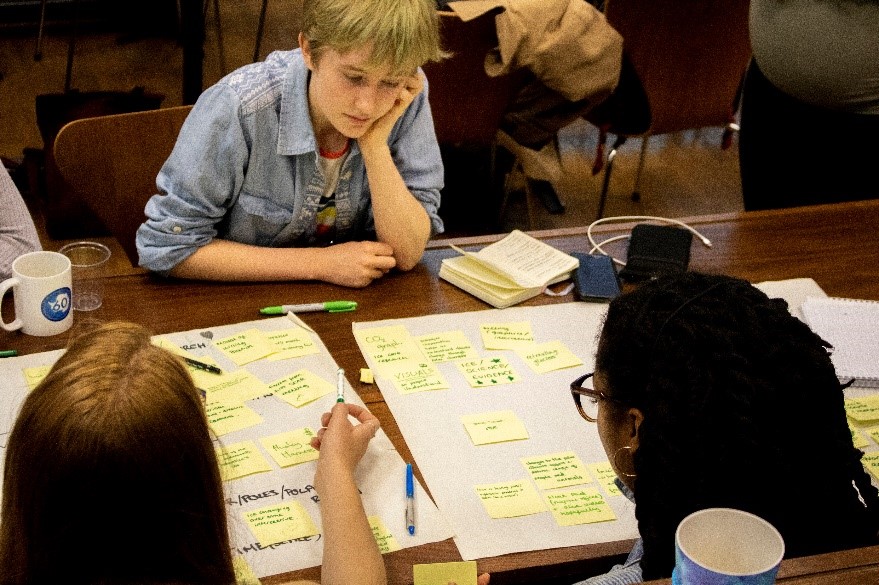
Later in the week, we spent a morning at the British Antarctic Survey, with a similar series of talks from their researchers as well as a tour of different parts of the building. Something that no one will forget was being given 40,000 year old ice to hold and listening as it melted to the sound of 40,000 year old air bubbles escaping back into the atmosphere.
The Polar Museum team welcomed the co-curation team by running object handling sessions and leading tours of the museum and stores. Our group were challenged to link objects together to tell a story (even ones which didn’t seem to go together at all!) and to think about what makes an object good or bad for display. This was a whole new way of thinking and they handled it very capably, listening and taking on board all that they heard, and putting it into practice in their decisions later in the week.
The group were incredibly diligent, settling down to all the tasks set for them with the same enthusiasm and interest as the first day. Together, they produced the framework for the exhibition which we need to make their ideas a reality. They finalised details of the sections to be included and the key points to be made, as well as object lists, information about the style and visual look of the display, and even ideas on how to market the exhibition to teenagers. As if that wasn’t enough, we also set them the challenge of presenting their decisions and pitching their exhibition to a group of new and familiar faces at the end of the week, with representatives from the UK Antarctic Heritage Trust, SCAR, the University Admissions offices, and SPRI researchers all in attendance.
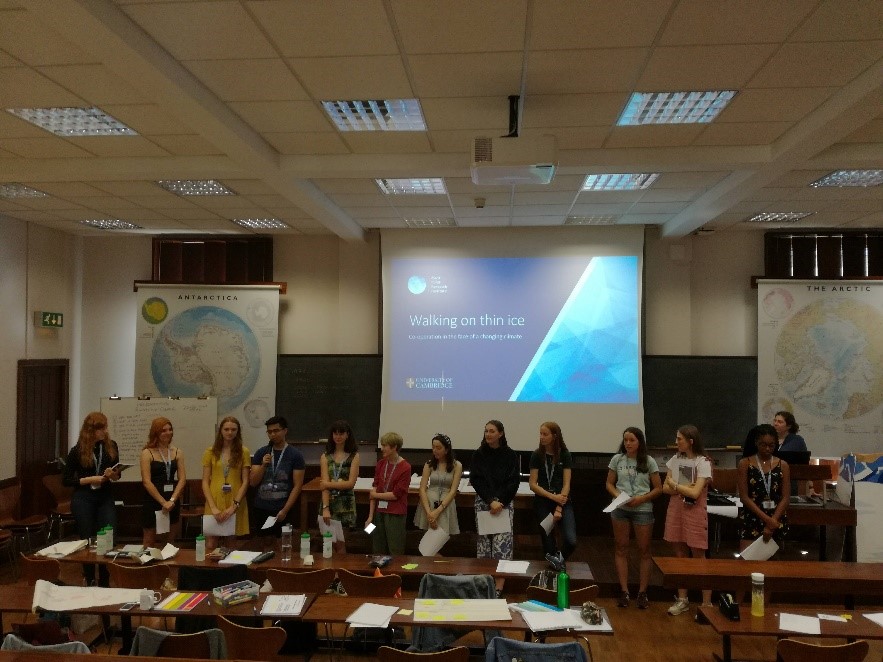
It’s not often that you get to sit in a room full of academics, researchers, and university staff left almost speechless by a presentation made by twelve 16-17 year olds. But that’s exactly what happened. Everyone who saw the presentation was blown away by their professionalism, nuanced understanding of complex ideas and well-thought through concepts. The atmosphere at SPRI was electric with pride and a lot of respect for all they had achieved. Afterwards their hard work was rewarded with a formal meal at Downing College – a fitting end to a week full of hard work, well done.
So what happens now? Our team have gone back to their homes all over the country, but the hard work continues at the Polar Museum where we are in the process of making their plans for a new temporary exhibition a reality. The nitty-gritty of working out the floor plan, writing and printing the labels and making sure that all the objects are ready for display. This is work that couldn’t be done in a week, but which is only possible thanks to the dedication of the teenagers on the summer school. The opening of the exhibition is scheduled to be in late November and we can’t wait to have them all back to see it. Watch this space, and when it’s ready, please do come and have a look at what will be a testament to the hard work of a very talented group of young people.
Check out #ClimateCuration on social media to see more about what we did over the week.

